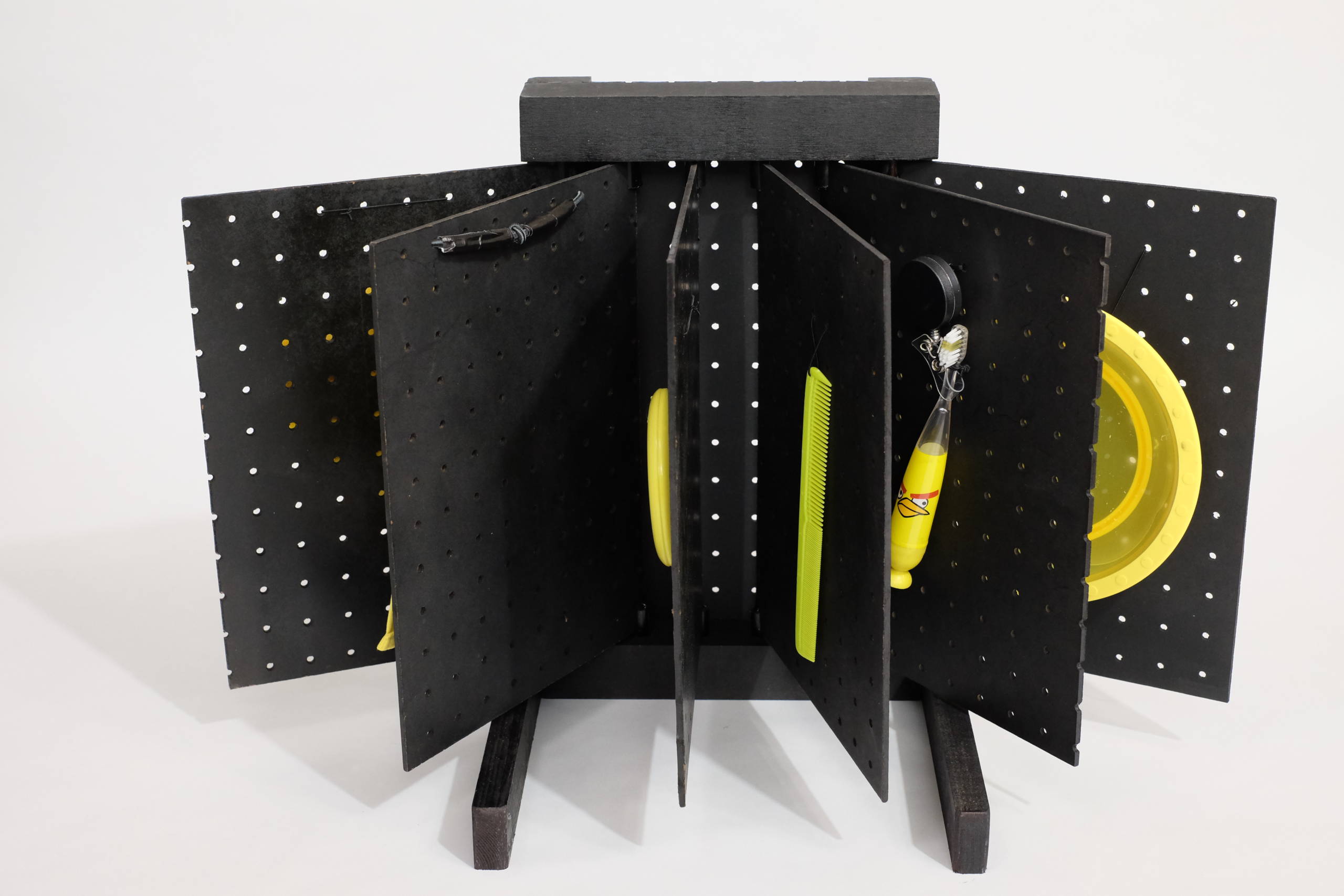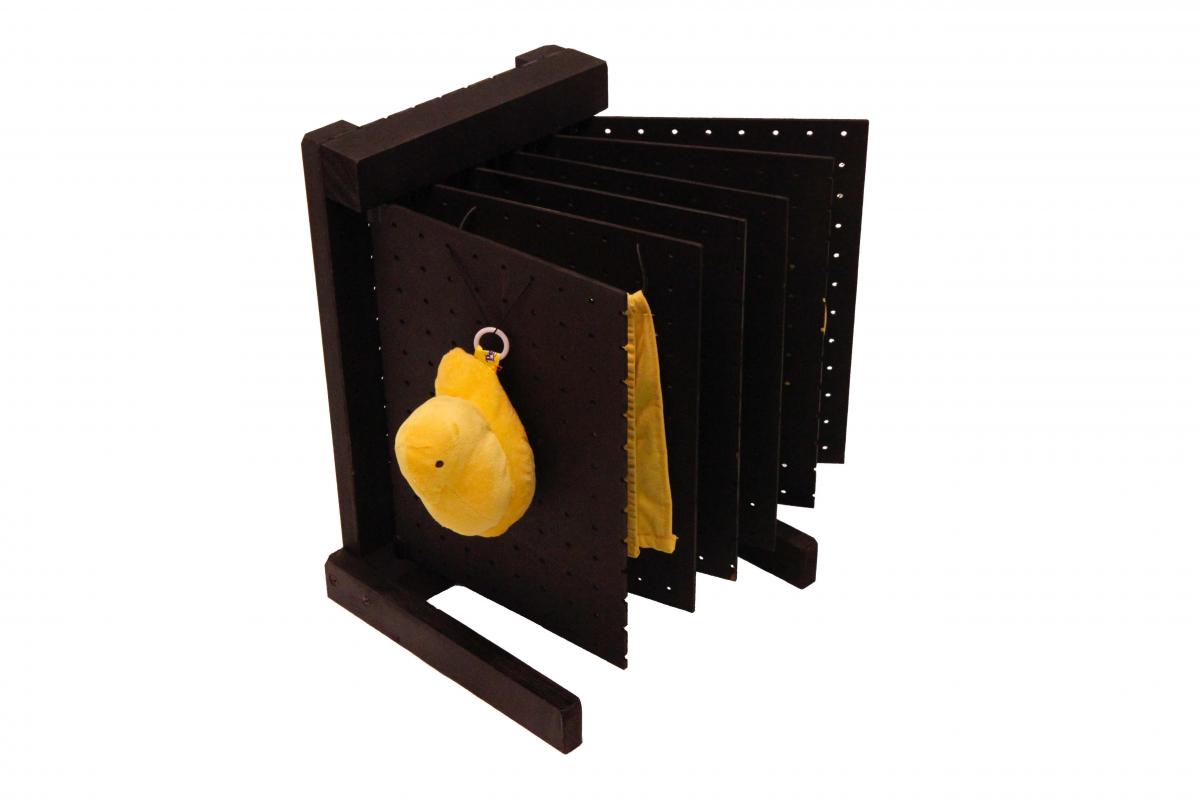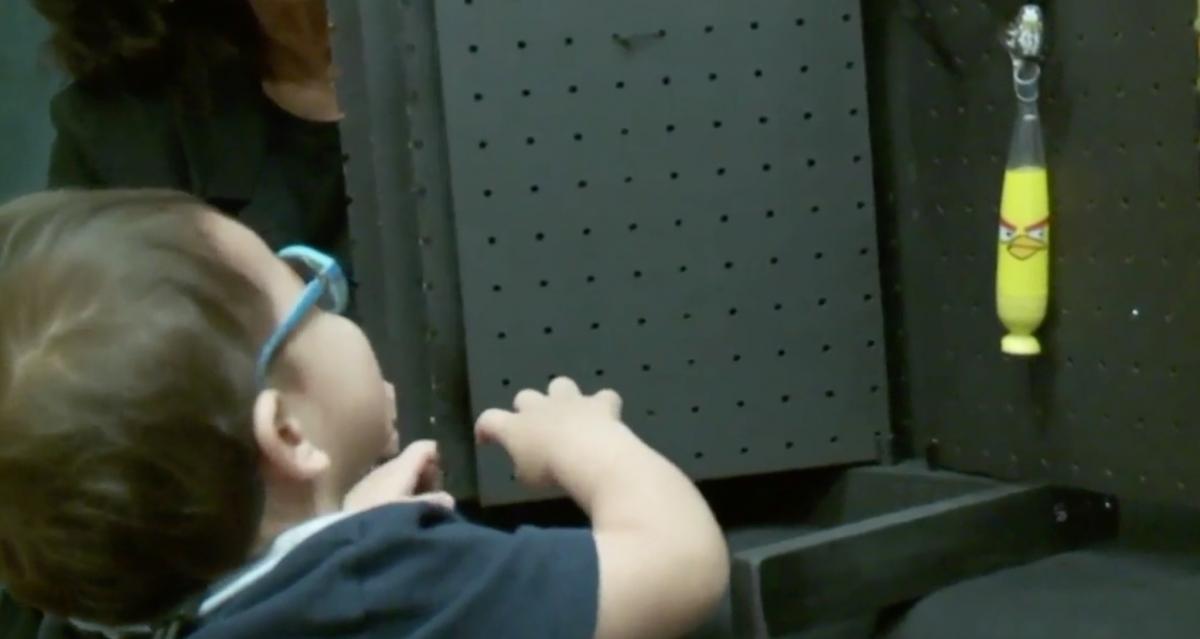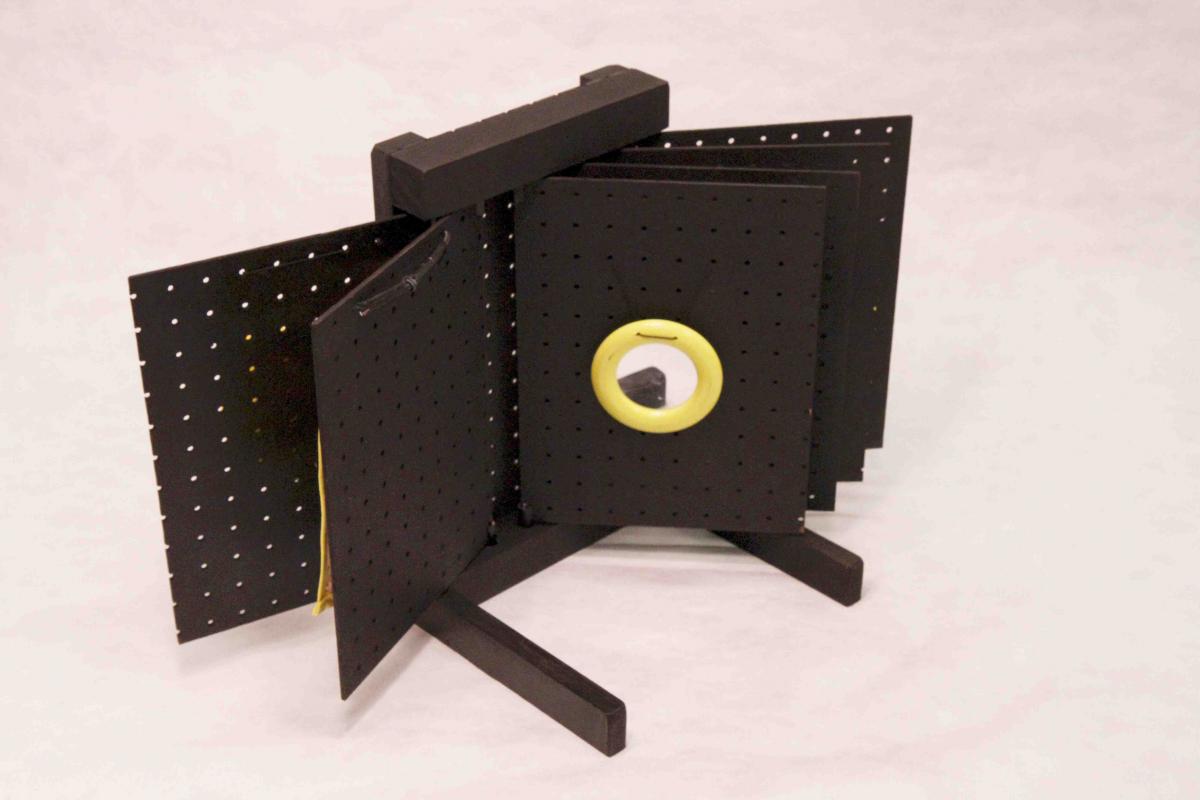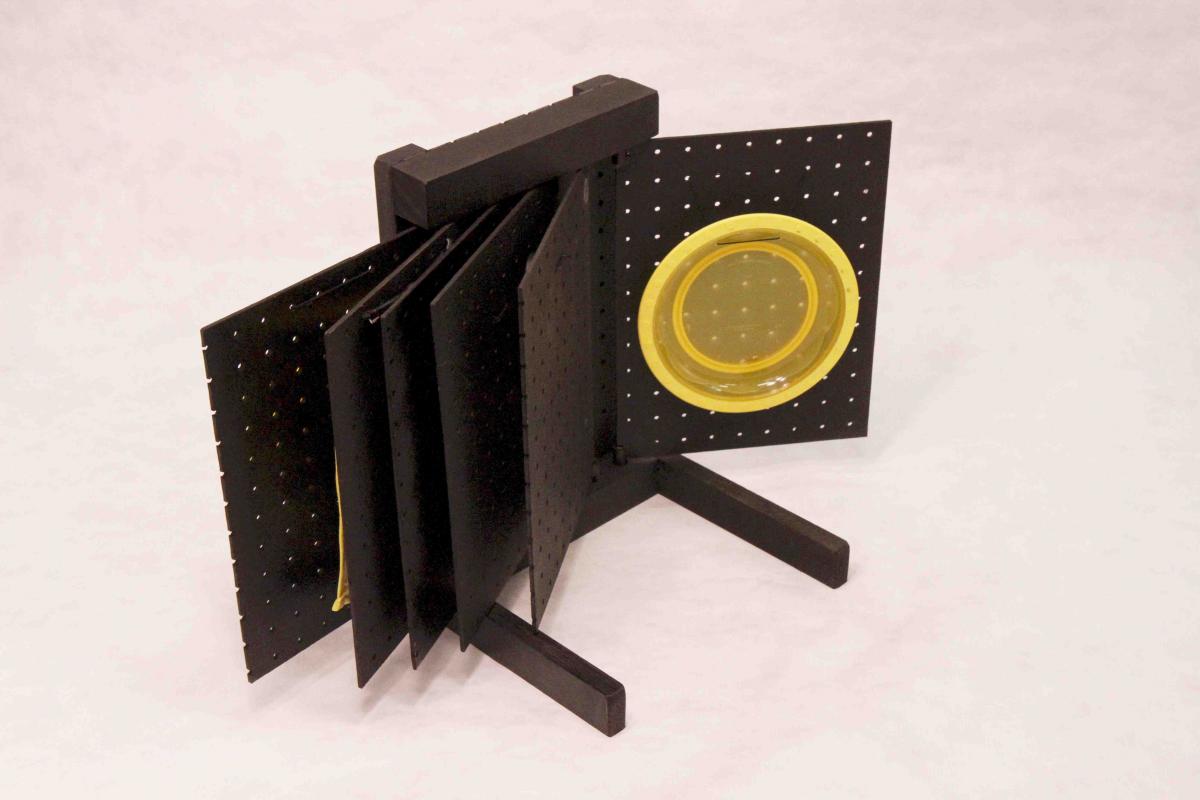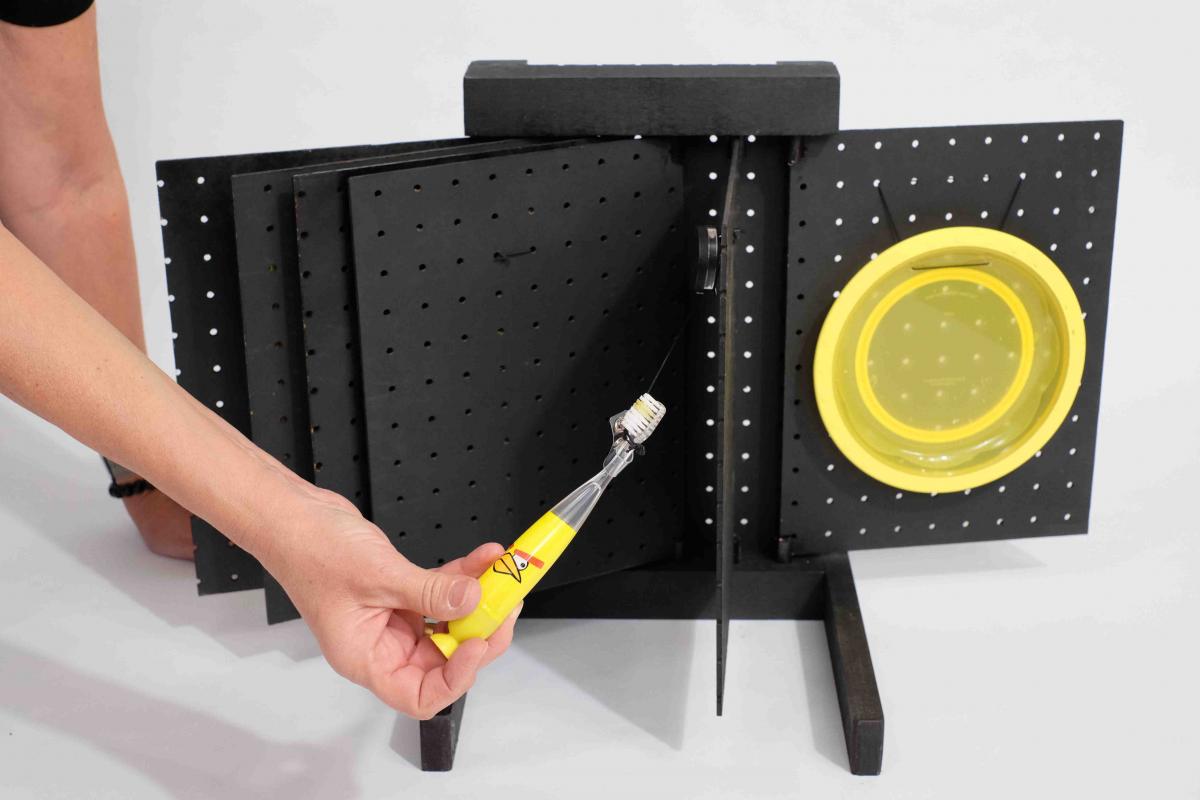This book is one of the examples shared showing how to adapt books for children with cortical visual impairment (CVI). Please begin by reading the introductory information:
- Literacy for Children with CVI: Overview and Implications for Different Phases
- Guidelines for Modifying Books for Students in Phases I, II, and III
- Adapting Books and Literacy for Students with CVI
- General Materials Used to Adapt Books for Children with CVI
This Pegboard Book has been adapted for children with CVI or deafblindness, and was modeled after the “Pegboard Books” created by Patty Obrzut, Assistant Director at the Penrickton Center for the Blind. Her original version can be found at: Things You Can Make. In addition, an alternate version can be found at: Pegboard Books for Our Earliest Readers. This “CVI Friendly” version of a “Pegboard Book” was created, in part, with the work of Dr. Lilli Nielsen and her Active Learning approach in mind. It also incorporates some Activity Calendar ideas.
It is made from 1/8th inch thick pegboard, spray painted a flat black. The “pages” in this version are 9”X12” and are relatively lightweight and easy to turn. The “spine” and “binding” are also spray painted black so that each page acts as a Window Card or occluder, making each mounted target stand out. It is important to note that for photographic purposes and for the viewer to see how this is made, the photographs were taken with the book in front of a white background, which makes the pegboard holes stand out. When using this book with a student, the book should sit on a black table or black mat and an Invisiboard should be set up behind the book to eliminate the visual distractions of the holes.
In this book, real, familiar objects are attached with black elastic, so that the objects can be pulled by the student, manipulated and explored, but then they pop back to the page for later use. On the page with the light up toothbrush, a black retractable badge holder is used. The toothbrush can easily be pulled forward, explored (orally, if desired) and then when it is released, it pops back to the page. The base of the Pegboard book has sturdy “legs” which extend outward towards the student, to keep the book in one spot when the pages are turned forcefully or roughly. Additional clamps can be added behind the book to further stabilize it, if needed.
This book was made following a “Get Ready for School” routine, which a young student uses. This student visually functions in Phase II on the CVI Range. His preferences helped to guide us, in part, in choosing each of the interesting, tactile and auditory materials, each representing what he does in the morning. In other words, the materials in his book all have meaning to him; they are not random objects. Before attaching the materials in the book, this student had lots of time to explore the individual materials as we discussed the salient features of each of the items.
Key Elements of CVI-Friendly Pegboard Book
Key elements of this “CVI Friendly” Pegboard Book and the specific objects chosen include:
- Using the student’s favorite, preferred color: yellow
- Incorporating the student’s favorite, familiar household objects
- Incorporating elements of light
- Incorporating objects or materials which have movement qualities and/or reflective qualities
- Ability to position the entire Pegboard Book so that it is presented in the best visual field for the student
- The pages stand upright, bringing the objects into the student’s lateral field of view (note: many students with CVI have lower visual field difficulties)
- There is only one target or object on a page, and pages are NOT used on their back side, which helps to reduce complexity in the array
- Ability to bring the Pegboard Book close to the student, within 18 inches
- If the student can reach and grasp the target or object, they can bring it even closer to their face because of the elastic attachments (or retractable badge card reel). Once released, it will pop back into place for later exploration and be exactly where they left it.
It will be important to set up an Invisiboard (or other similar black backdrop) behind the Pegboard Book, to eliminate distant “visual clutter” which might interfere with looking toward/at the Pegboard Book. This also has the added benefit, as noted above, of making the holes in the pegboard “disappear”.
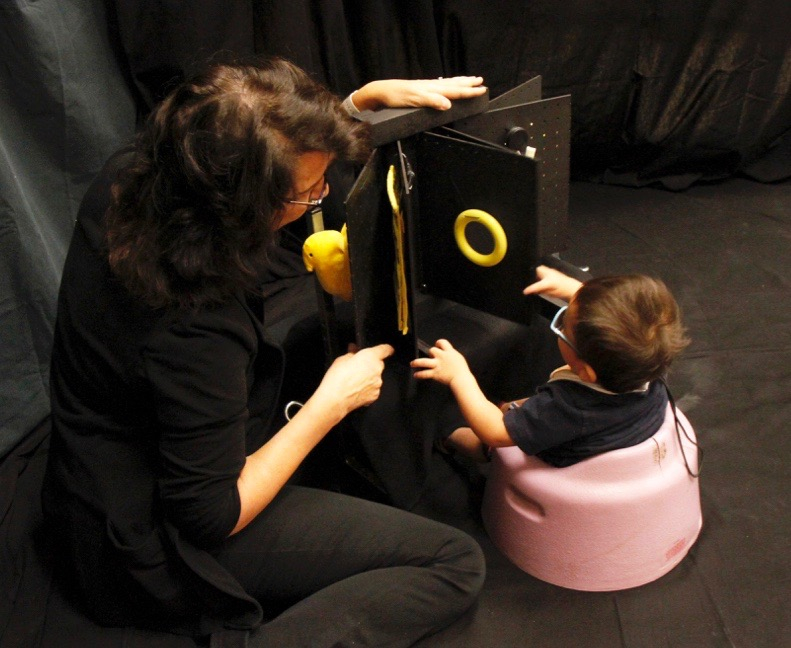
The story lines for this book are on a separate sheet of paper. Because this book was made for a child who loves music and specific tunes, this story was sung to the tune of, “These are a Few of my Favorite Things”. As is noted above, some students may not be able to tolerate the competing auditory input while using vision; another reason to look closely at the results of the CVI Range before creating your own books.
The song/story that goes with my Pegboard Book is as follows:
Get Ready for School
(To the Tune of “These are a Few of My Favorite Things”)
A very complete Tutorial on how to make and assemble this book can be found in the DIY section of my website at strategytosee.com

- Black, round elastic
- Black retractable badge holder
- 1/4th inch thick pegboard
- 2” X 2” hardwood board
- 1” X 2” hardwood board
- ½” doweling, 3 feet
- Active Learning materials to put on the pages
- A very complete Tutorial on how to make and assemble this book can be found in the DIY section of my website at strategytosee.com.
Examples of Books
The following are other examples of books I have created for students with CVI:
- Where is the Red Gift Bag?
- One Yellow Slinky Bouncing Up and Down
- Three Silver Pie Tins and One Red Puff
- Three Bright Red Pom Poms Lined Up in a Row
- Five Little Lights
- My Favorite Things
- Clifford’s Family (Modified Version)
For more ideas from Diane Sheline, visit Strategy to See.

